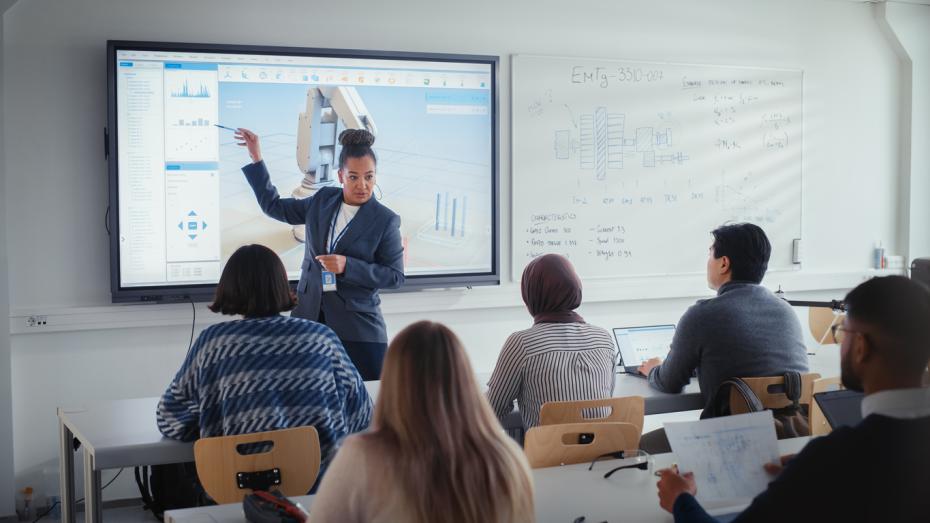A diverse society needs a diverse healthcare workforce. And diversity in health professions education is increasingly possible due to a wider variety of entry routes to undergraduate programmes. This includes students from graduate entry and under-represented social and economic backgrounds, and students with disabilities. However, by itself, access to university does not achieve inclusion. Teaching and learning needs to adapt to support diverse undergraduate groups in attaining acceptable standards of proficiency for their chosen professions, enabling them to bring valuable life experiences and perspectives to their careers.
- Universal design for learning: an introduction and getting started
- The case for using universal design for learning at your institution
- Are block teaching and universal design for learning compatible?
Universal design for learning (UDL) is a framework grounded in cognitive neuroscience and the learning sciences. In action, UDL moves away from classifying learners into categories of “typical” or “needing additional supports”, but instead offers flexibility in teaching and learning for the benefit of all. While UDL can feasibly be implemented in university-based classroom settings, the translation to the busy and variable environment of practice placements can be challenging and demands creativity. Taking the “plus-one” approach and reflecting what we’ve learned as a health sciences university, we share six ideas for practice educators to implement the principles of UDL.
Principle 1: Providing multiple means of engagement – the ‘why’ of learning.
- Support learners to be proactive about identifying, articulating and acting on how they learn best. This arguably begins long before practice placement. It demands a culture of openness and psychological safety within the university, so that a learner feels empowered to disclose and discuss their needs with university faculty, who can then facilitate training and support. Practice tutors and educators work within frenetic, resource-constrained settings, where patient care comes first. Early support ensures that learners arrive to placement ready to actively contribute to care.
- Share relevant, practical information about the clinical site in advance. This could include:
- site maps highlighting important rooms and locations
- weekly schedules with important events such as multidisciplinary meetings
- lists of key team members with their photos, contact details and roles.
In one clinical site, physiotherapy students worked with their practice tutor to co-design an e-induction. Such initiatives support learners to “get their bearings” and minimise the distraction created by uncertainty about where to go or who to ask. There is also scope to drum up interest by including an indicative patient case or format of a typical working day, empowering the learner with a sense of purpose.
- Provide options for self-regulation by building in time and space for reflection. Healthcare practice placements are challenging for learners because they feel a sense of constant scrutiny, as though every move counts towards their placement grade. This creates a sense of urgency and risks eroding psychological safety. Practically speaking, time for self-reflection can be built in through brief outdoor walks or signposting time in a “quiet corner” with a personal notepad or audio diary.
Principle 2: Providing multiple means of representation – the ‘what’ of learning.
- Provide alternatives for written information. Information in healthcare settings is usually displayed or shared in fixed formats, typically written notes. This can be difficult to navigate for learners who process better with visual or auditory information. Is there an opportunity for a student to access a patient’s healthcare record in advance of a consultation and create their own (anonymised) diagram or audio file with the pertinent information? If reading is not a strength, in advance of the clinical encounter consider building in a “check-in” for written information. For interpreting physical signs, some sites allow students to record short videos, creating a few vital minutes to process the “big picture”. (For data protection and anonymity, with permission, these could be recorded and viewed on the patient’s own device.) It might be feasible to consider technologies such as voice-to-text or dictation. These can allow learners to practise their clinical reasoning and documentation without the stress of struggling with writing under pressure.
- Provide a glossary to support decoding of commonly used language, syntax and colloquialisms, particularly those that live in the hidden curriculum. Transition from novice to competent healthcare practitioner involves “learning the lingo”. This is not always obvious to diverse learners. For example, what do we mean in the acute hospital setting when we refer to a patient “going off”? To some this means clinically deteriorating; to others it could mean leaving the hospital! A glossary can avoid misunderstandings and ensure nothing is missed.
Principle 3: Providing multiple means of action and expression – the ‘how’ of learning.
- Create options for practice-based assessment. Many healthcare practice placements include a reflective assignment as part of the assessment. Offering a choice between audio and traditional written assignments allows learners to play to their strengths in presenting their growth and development. Similarly, if a case-based presentation is typically delivered as a PowerPoint, offer the option of a poster or infographic. This less-formal option could alleviate anxiety for learners who are developing the skill of public presentation.
By approaching UDL from a “plus-one” standpoint, practice educators can make incremental changes to create flexibility for the benefit of all learners. These tips might be applicable to other work-based placements and learning environments beyond the healthcare setting.
Ailish Malone is a lecturer in physiotherapy at RCSI University of Medicine and Health Sciences in Dublin, Ireland, where she researches and teaches in neurology, rehabilitation and movement science.
Fiona Daly is a physiotherapist working as practice education coordinator at RCSI University of Medicine and Health Sciences. She has worked in the area of health professions education for 15 years.
If you would like advice and insight from academics and university staff delivered direct to your inbox each week, sign up for the THE Campus newsletter.




comment